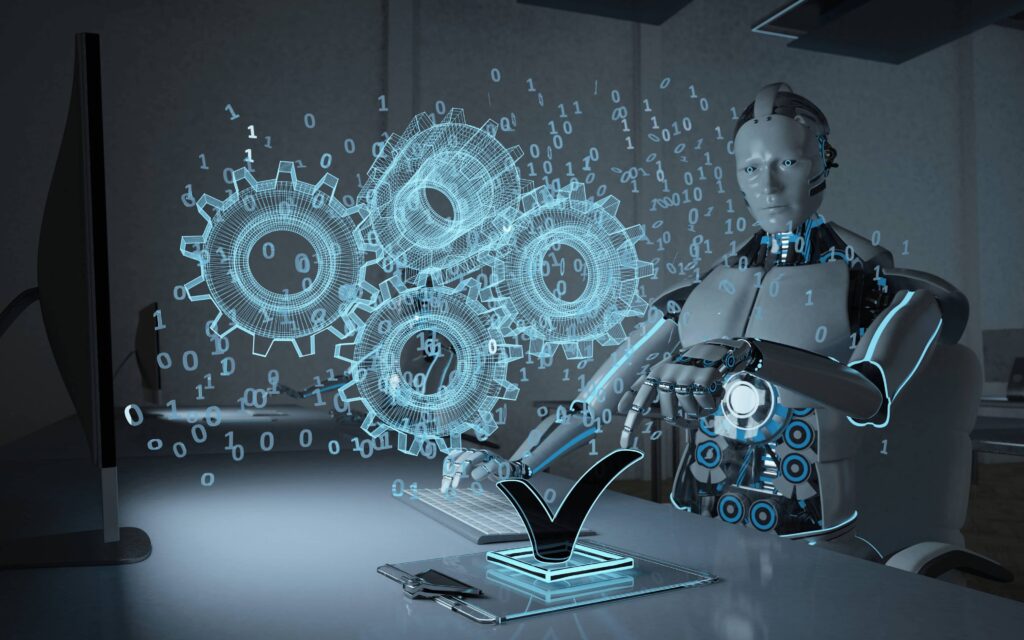Software testing is a method that is an important part of any development project.
Software testing is the only planned method of observing an application under certain conditions and enabling the tester to identify risks associated with the installation of software. On the other hand, on the path of digital transformation, testing is gradually being converted to increased automation in order to guarantee maximum precision and accuracy. The world relies on artificial intelligence to make the application error-free (AI). This means that instead of manual testing and human participation, robots are gradually gaining the upper hand.
What advantages does artificial intelligence offer software testers?
Software testing is often a lengthy process. For developers looking for faster deployments with limited infrastructure, Artificial Intelligence (AI) is an ideal choice. It’s ideal for delegating tedious work to AI-powered automation and only leaving 20% of the tests to humans ingenuity and cognitive skills. It would provide safer results because hand-made tests are not only time consuming but are also prone to inaccuracies and inconsistencies.
The introduction of artificial intelligence algorithms will help the test industry deliver intelligent and productive software to their customers, and the integration of AI into the software development lifecycle will greatly help developers and test teams identify and quickly fix bugs before the program is available for QA Teams. The approach helps speed up the software testing process by allowing repetitive operations to be performed efficiently, saving time and money.
Artificial intelligence in software testing protects an application from likely application failures that could harm the program and the business in the long run. As artificial intelligence becomes more common in our lives, the need for tests for artificial intelligence is growing. Using the example of autonomous cars: If the intelligence of the car fails, makes poor judgment or has a slow reaction time, it can easily lead to a car accident in which lives are at risk. The software testers are as follows:
Reduces Costs
If bugs or errors in the program are not corrected as quickly as possible, they can become expensive. Immediate feedback with the help of AI can help locate and fix errors as quickly as possible, which leads to significant cost savings. In addition, AI can effectively classify data, spot errors and scan codes in less time. This reduces manual labor and human error, which leads to more accurate results at a lower cost.
Increased Accuracy
Even the most experienced tester can create errors when performing repeated activities in manual tests. For this reason, automation was primarily used: to limit the scope of repetitive tasks.
When AI is used to drive automation, AI takes on repetitive tasks so test teams can focus on exploration activities and find automation solutions. As a result, time is saved and precision is improved for high quality results.
Reduces the Test-Cycle Time
It is easy for an evaluator to understand which test cases have to be completed with the AI technology in each test cycle. AI is effective in capturing information from previous application test runs. This makes it easier for the AI to recognize changes in the code. Automatically assigns test-suites based on application risk. The risks of application are determined taking into account various elements, such as the most frequently used features of the program, tests with a high probability of error or complexity, etc. This method of early detection of errors and execution of test cases that could be affected at the beginning of a test cycle allows the deployment teams to provide faster feedback and ensures that Bugs to be corrected.
It Aids in the Faster Detection of Bugs
In contrast to conventional test approaches, the AI methodology is able to identify application errors more quickly. Error detection has been delayed in previous techniques, creating several drawbacks to their application prior to their introduction. AI helps with process automation, automated code correction and assigning problem tracking to quality control teams. This helps teams spot bugs as early as possible and achieve a bug – free program before starting.
Helps both Developers and Testers
Developers can use shared automated tests to identify problems immediately before submitting them to the QA team. When the source code changes, tests can be automatically run, logged, and the team or developer notified if they fail. These features also increase developer confidence and saves your time.
Encourages the Execution of Scripts
When using AI, there is no need to automate the test scripts as the test scripts are automatically executed by the AI. It also makes the test cases more stable, so there are no noticeable changes when the locators are modified.
Increases the Pace with which Tests are Covered
Artificial intelligence is effective for expanding the breadth and depth of test cases. Artificial intelligence monitors application storage, file contents, internal programs and data tables to ensure that performance is on-demand. In addition, AI-powered test automation solutions can run hundreds of test cases in a single test run. This AI function makes a significant contribution to accelerating test coverage.




